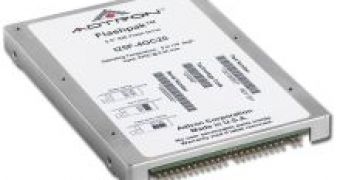In the last months, some of you may have noticed that the number of flash based gadgets has increased. Recently, PQI has announced a 64GB flash device using Samsung chips. Manufacturers such as Asus, Hitachi and Sandisk have followed this trend and have almost readied their versions of Solid State Drives. You could say that the producers are ready for the transplant. Whether it will actually take place or not, is for the users to decide.
There are two things that concern the mass move from the classical hard drive to SSD. First, you have the fact that SSDs are quite expensive and that they also possess limited storage space, making the price per GB really high. On the other hand, the access time is practically inexistent making the SSD a healthy alternative to classical hard drives. You should also take into account that a SSD consumes 5 to 7 W when in load and 0W when idle. Maybe a 10,000 MTBF for a multi-cell NAND device might seem way less than the MTBF of a hard drive but with the help of new technology capable of writing data through as many groups of cells as possible, you can easily use the SSD more than 150 years before all the cells will die from burnout.
Samsung announced that its first generation of SSDs based upon a higher performance single cell device is ready and that it will increase the storage capacity up to 128GB by the end of 2007. That may not seem so much, especially when you have 1TB of storage filled with movies and music, but it should be more than enough to hold the entire operating system and all the installed programs. Moreover, such a SSD would quickly find its way into the laptop world where it could save 15-20% more battery time without any performance penalties.
Maybe for you torrent addicts, there is no way any SSD device will find its way into your PC any time soon. But when it comes to the operating system, SSDs are ready for the battle.

 14 DAY TRIAL //
14 DAY TRIAL //